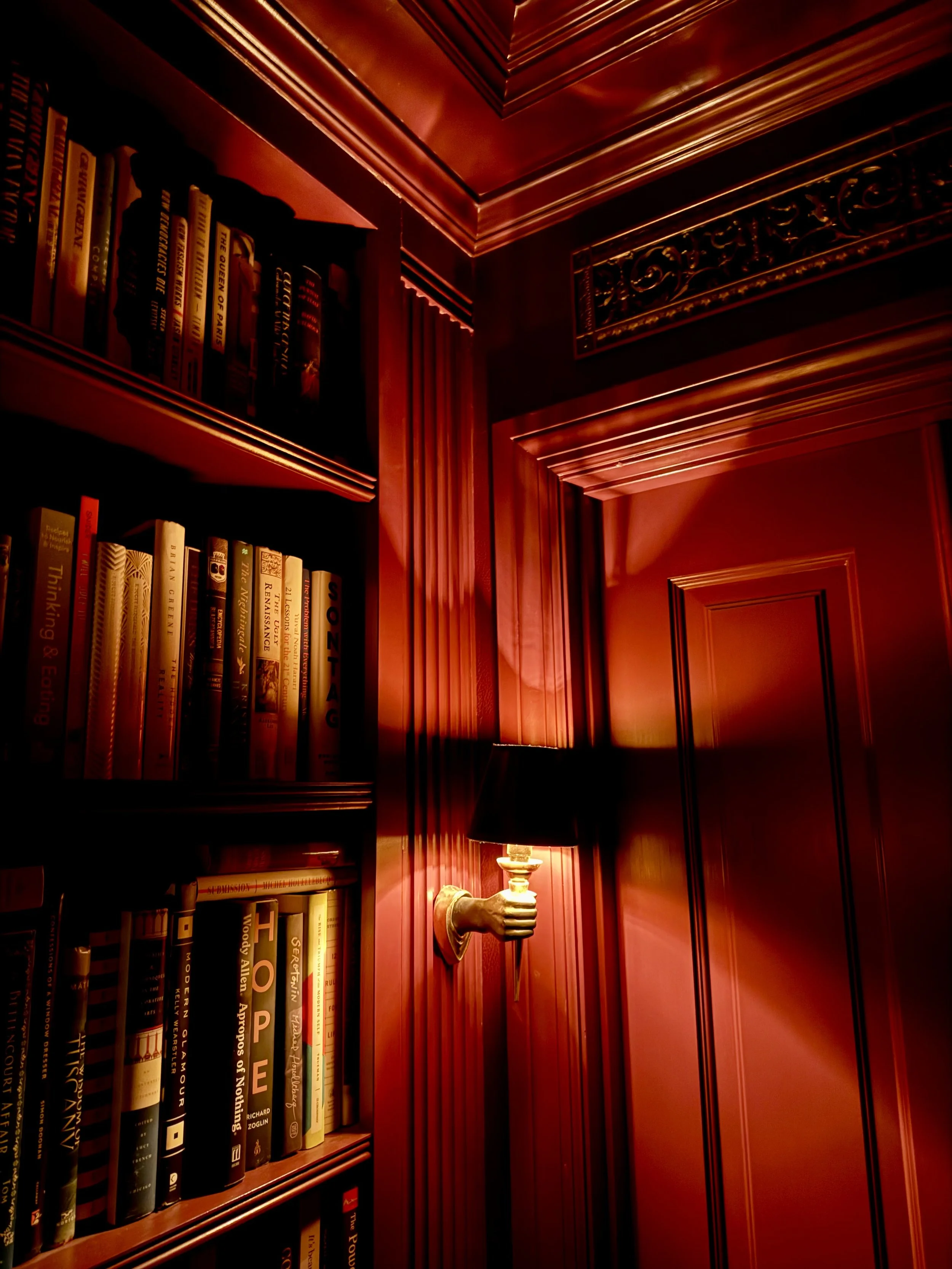MASTERCLASS | COLOR DRENCHING
The Power of One: Designing with a Singular, Saturated Hue
Step-by-step tips for creating a home that’s bold, balanced, and breathtaking.
Color drenching is a statement—not of excess, but of confidence. It requires a keen eye for tone, an understanding of light’s transformative power, and a willingness to surrender to the power of a singular, enveloping shade. Here’s how to bring this sophisticated technique into your home:
Select the Shade
Opt for rich, nuanced hues with depth. Earthy, moody, or jewel-toned shades thrive in this technique, as they create an immersive effect that envelops without overwhelming — think desaturated greens, moody blues, or rich aubergines.
Understand the Role of Light
Color is fluid; it shifts with the day’s light. Before committing, paint generous swatches on different walls and observe how the hue transforms under morning sunlight, evening glow and candlelight’s flicker. A color that feels grounding in daylight may take on a sultry elegance at night.
Extend Beyond the Walls
For true immersion, let the color flow seamlessly — across ceilings, trim, doors, and even furniture. The absence of contrast eliminates visual breaks allowing the room to feel sculptural, enveloping and carefully considered.
Highlight Architectural Details
Coffered ceilings, intricate moldings, or built-in bookcases become even more striking when bathed in the same hue. Instead of receding, these elements take on a quiet prominence, enhancing the room’s character and craftsmanship.
Finishes Add Flair
To prevent the space from feeling flat, experiment with sheen variations. A matte or velvet-finished wall absorbs light, while satin or semi-gloss on trim and doors adds a subtle interplay of reflection. This contrast allows light to subtly shift across surfaces adding depth and dimension while preserving the monochromatic palette.
Layer in Texture
A space swathed in a singular shade should feel rich, never static. Offset the smoothness of painted surfaces with tactile elements—brushed velvet upholstery, raw linen curtains, a patinaed bronze sconce. These layers bring warmth and dynamism to the space.
Accentuate with Thoughtful Contrasts
Though the foundation remains unified, consider curated accents—furnishings in complementary hues, a hint of pattern, or metallic finishes that catch the light. This balance creates visual interest and ensures the space is both engaging and inviting.
Consider Layered Lighting
Lighting transforms color. Soft, warm illumination enhances depth and richness, making hues feel even more atmospheric. A mix of ambient, task, and accent lighting ensures the space is not just beautifully designed but also functional and inviting.
Start Small
If the thought of fully drenching a space feels daunting, begin with a powder room, alcove, or hallway. Smaller spaces lend themselves beautifully to bold experimentation.



